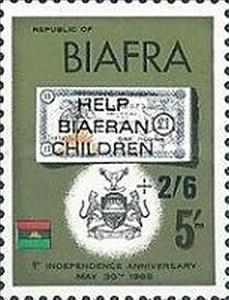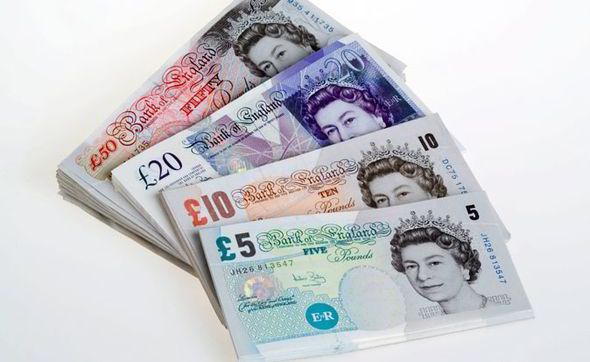Stamp: Banknote with overprint (Biafra 1968)
Banknote with overprint (Biafra 1968)
30 May (Biafra ) within release Independence with overprint HELP BIAFRAN CHILDREN goes into circulation Stamp Banknote with overprint face value 5+2'6 Biafran shilling
| Stamp Banknote with overprint in catalogues | |
|---|---|
| Michel: | Mi: NG-BI 25 |
| Yvert et Tellier: | Yt: NG-BI 33 |
Stamp is square format.
Also in the issue Independence with overprint HELP BIAFRAN CHILDREN:
- Stamp - Orphan with overprint face value 10+2'6;
- Stamp - Ammunition production with overprint face value 4;
- Stamp - Fallen Soldier with overprint face value 1+'6;
- Stamp - Help for Refugees with overprint face value 2'6+1;
- Stamp - Banknote with overprint face value 5+2'6;
Stamp Banknote with overprint it reflects the thematic directions:
A banknote—also called a bill (North American English), paper money, or simply a note—is a type of negotiable promissory note, made by a bank or other licensed authority, payable to the bearer on demand. Banknotes were originally issued by commercial banks, which were legally required to redeem the notes for legal tender (usually gold or silver coin) when presented to the chief cashier of the originating bank. These commercial banknotes only traded at face value in the market served by the issuing bank. Commercial banknotes have primarily been replaced by national banknotes issued by central banks or monetary authorities.
A coat of arms is an heraldic visual design on an escutcheon (i.e. shield), surcoat, or tabard. The coat of arms on an escutcheon forms the central element of the full heraldic achievement which in its whole consists of shield, supporters, crest, and motto. A coat of arms is traditionally unique to an individual person, family (except in the United Kingdom), state, organisation or corporation.
A flag is a piece of fabric (most often rectangular or quadrilateral) with a distinctive design that is used as a symbol, as a signaling device, or as decoration. The term flag is also used to refer to the graphic design employed, and flags have since evolved into a general tool for rudimentary signalling and identification, especially in environments where communication is similarly challenging (such as the maritime environment where semaphore is used). National flags are patriotic symbols with varied wide-ranging interpretations, often including strong military associations due to their original and ongoing military uses. Flags are also used in messaging, advertising, or for other decorative purposes. The study of flags is known as vexillology, from the Latin word vexillum, meaning flag or banner.



